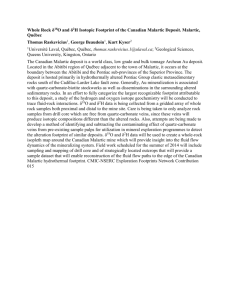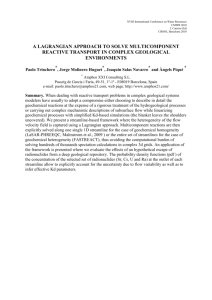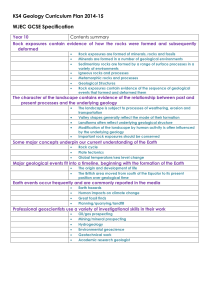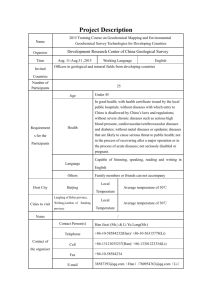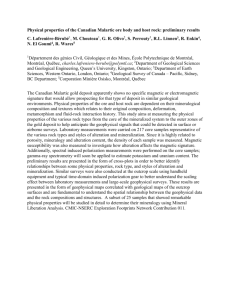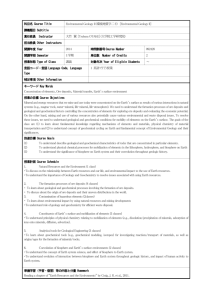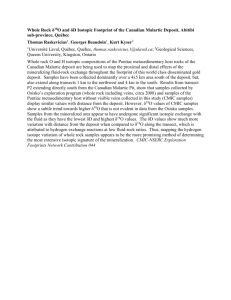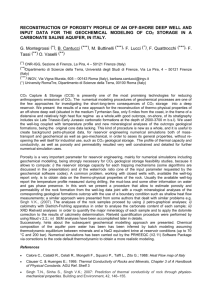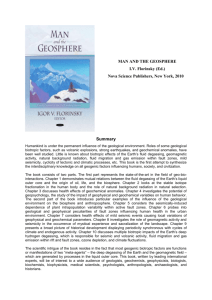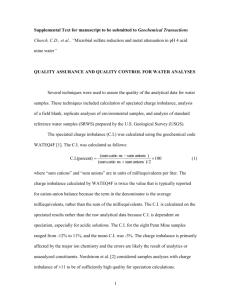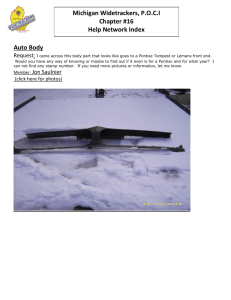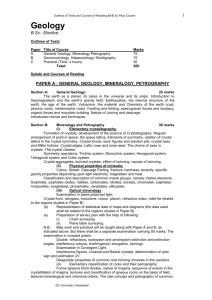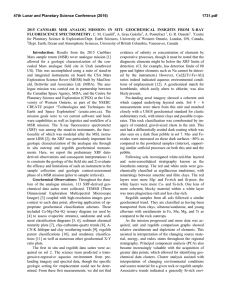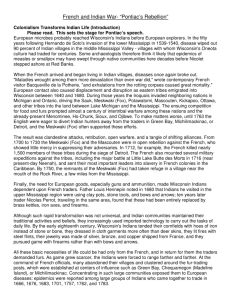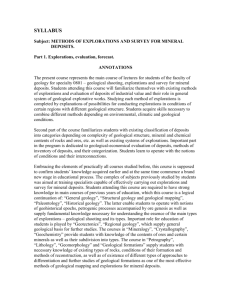Perrouty
advertisement
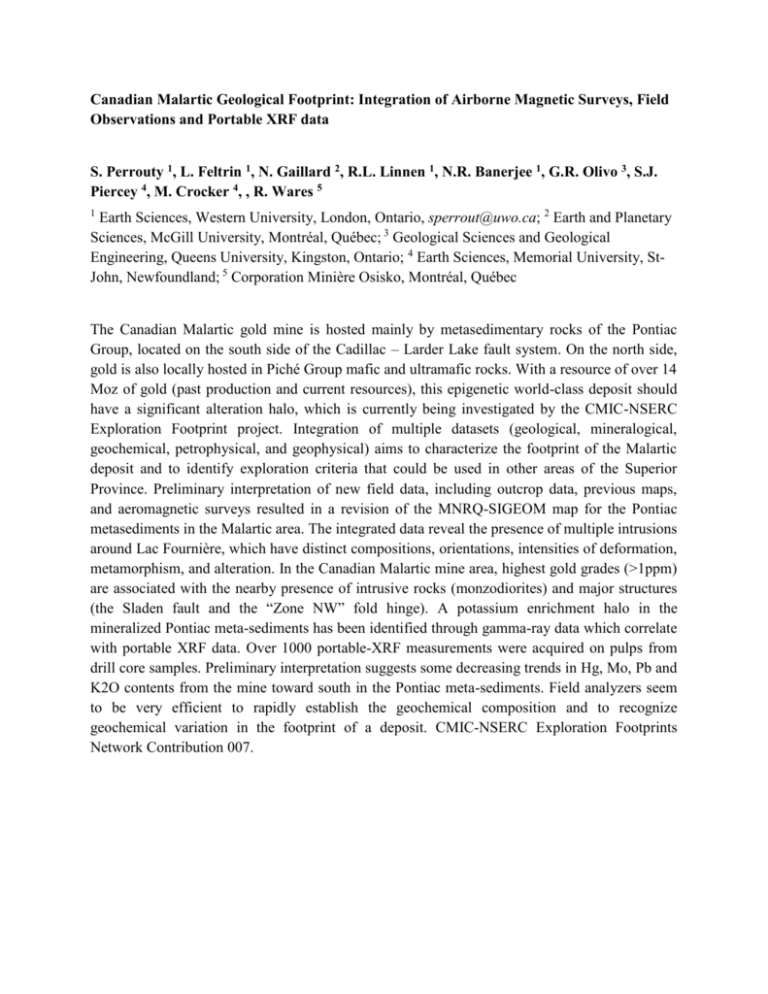
Canadian Malartic Geological Footprint: Integration of Airborne Magnetic Surveys, Field Observations and Portable XRF data S. Perrouty 1, L. Feltrin 1, N. Gaillard 2, R.L. Linnen 1, N.R. Banerjee 1, G.R. Olivo 3, S.J. Piercey 4, M. Crocker 4, , R. Wares 5 1 Earth Sciences, Western University, London, Ontario, sperrout@uwo.ca; 2 Earth and Planetary Sciences, McGill University, Montréal, Québec; 3 Geological Sciences and Geological Engineering, Queens University, Kingston, Ontario; 4 Earth Sciences, Memorial University, StJohn, Newfoundland; 5 Corporation Minière Osisko, Montréal, Québec The Canadian Malartic gold mine is hosted mainly by metasedimentary rocks of the Pontiac Group, located on the south side of the Cadillac – Larder Lake fault system. On the north side, gold is also locally hosted in Piché Group mafic and ultramafic rocks. With a resource of over 14 Moz of gold (past production and current resources), this epigenetic world-class deposit should have a significant alteration halo, which is currently being investigated by the CMIC-NSERC Exploration Footprint project. Integration of multiple datasets (geological, mineralogical, geochemical, petrophysical, and geophysical) aims to characterize the footprint of the Malartic deposit and to identify exploration criteria that could be used in other areas of the Superior Province. Preliminary interpretation of new field data, including outcrop data, previous maps, and aeromagnetic surveys resulted in a revision of the MNRQ-SIGEOM map for the Pontiac metasediments in the Malartic area. The integrated data reveal the presence of multiple intrusions around Lac Fournière, which have distinct compositions, orientations, intensities of deformation, metamorphism, and alteration. In the Canadian Malartic mine area, highest gold grades (>1ppm) are associated with the nearby presence of intrusive rocks (monzodiorites) and major structures (the Sladen fault and the “Zone NW” fold hinge). A potassium enrichment halo in the mineralized Pontiac meta-sediments has been identified through gamma-ray data which correlate with portable XRF data. Over 1000 portable-XRF measurements were acquired on pulps from drill core samples. Preliminary interpretation suggests some decreasing trends in Hg, Mo, Pb and K2O contents from the mine toward south in the Pontiac meta-sediments. Field analyzers seem to be very efficient to rapidly establish the geochemical composition and to recognize geochemical variation in the footprint of a deposit. CMIC-NSERC Exploration Footprints Network Contribution 007.
